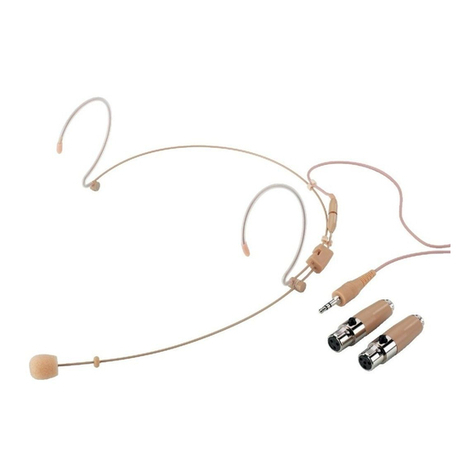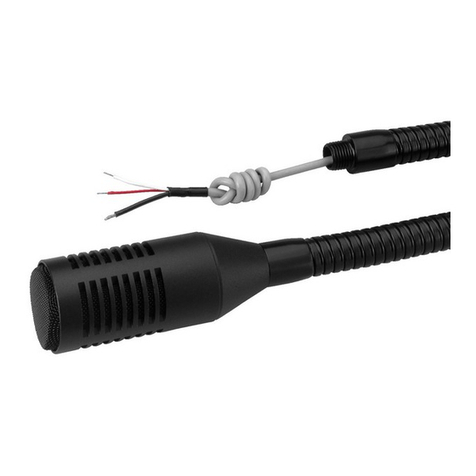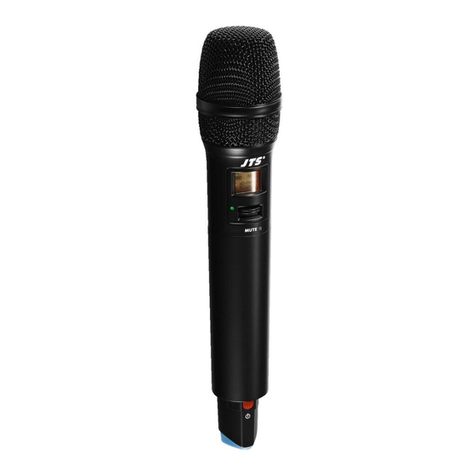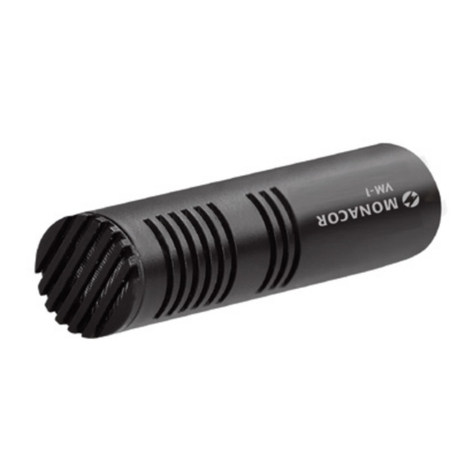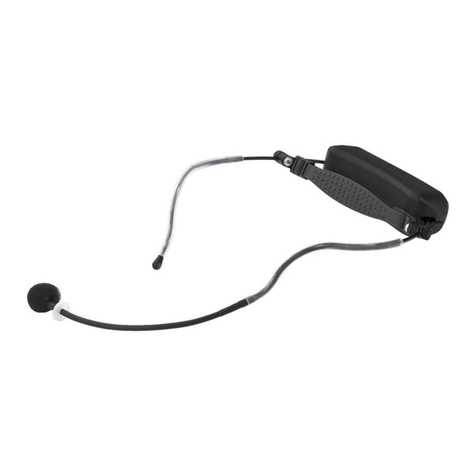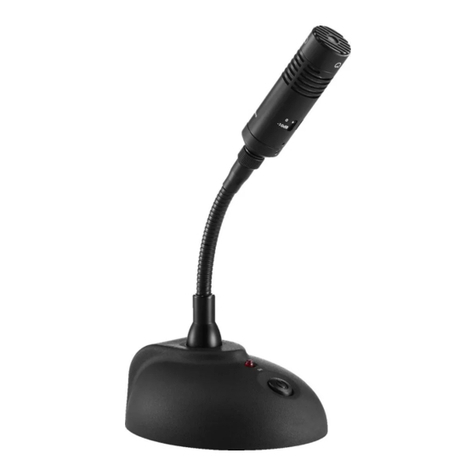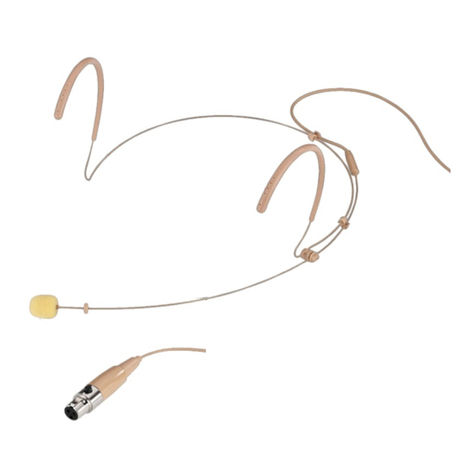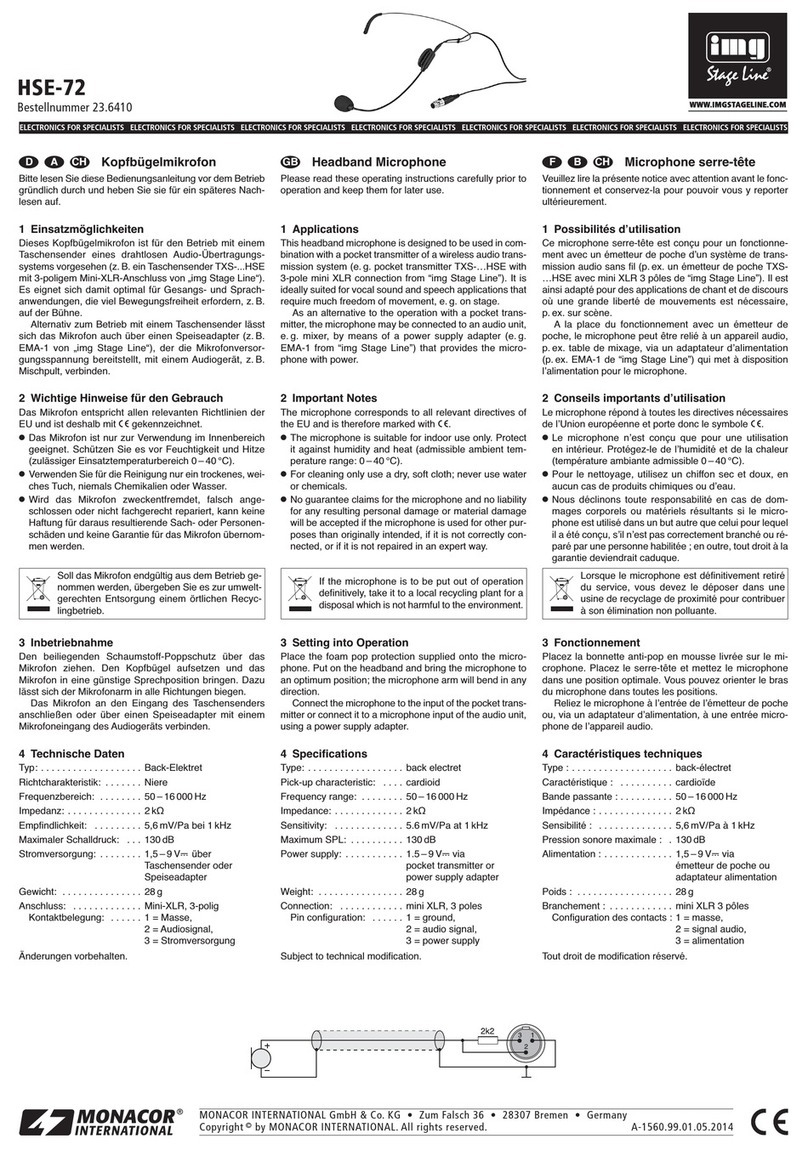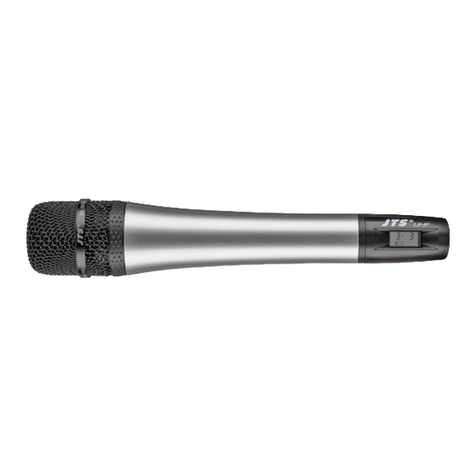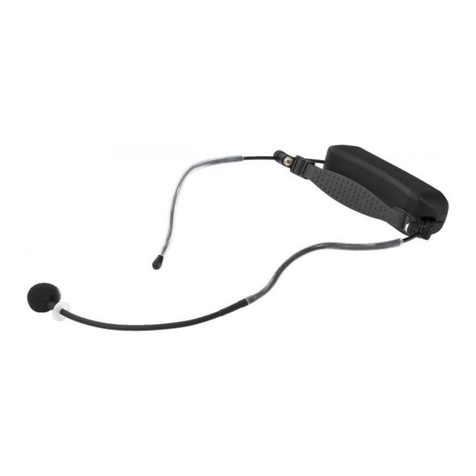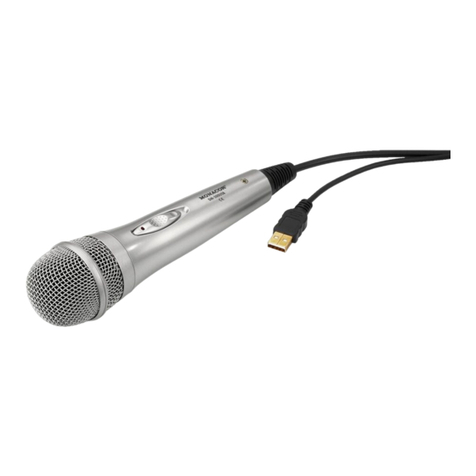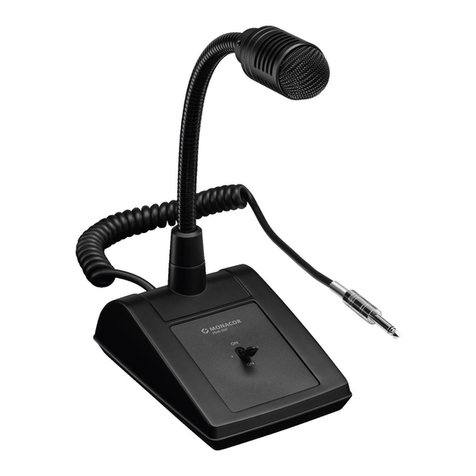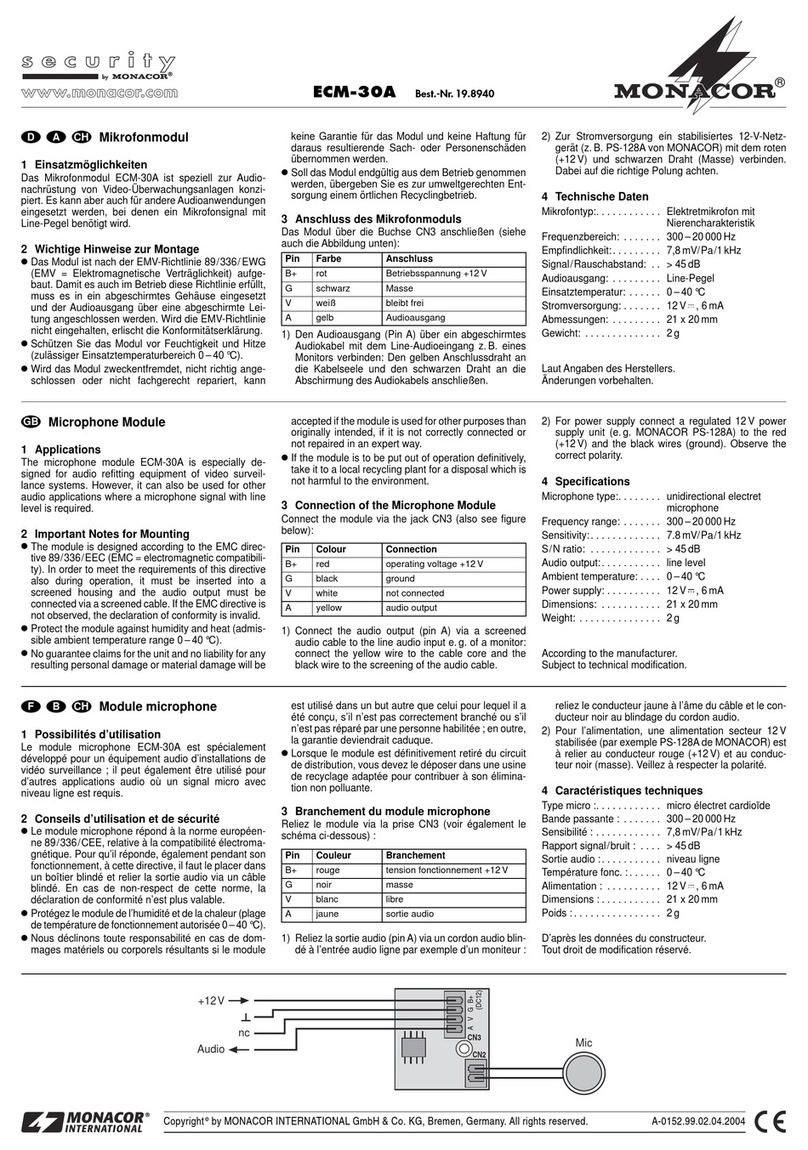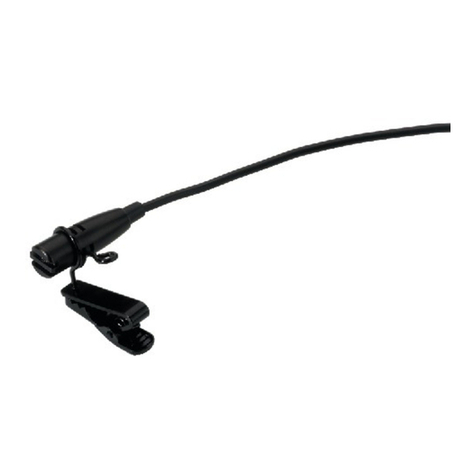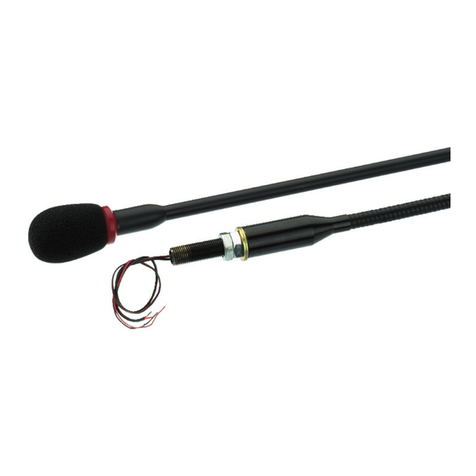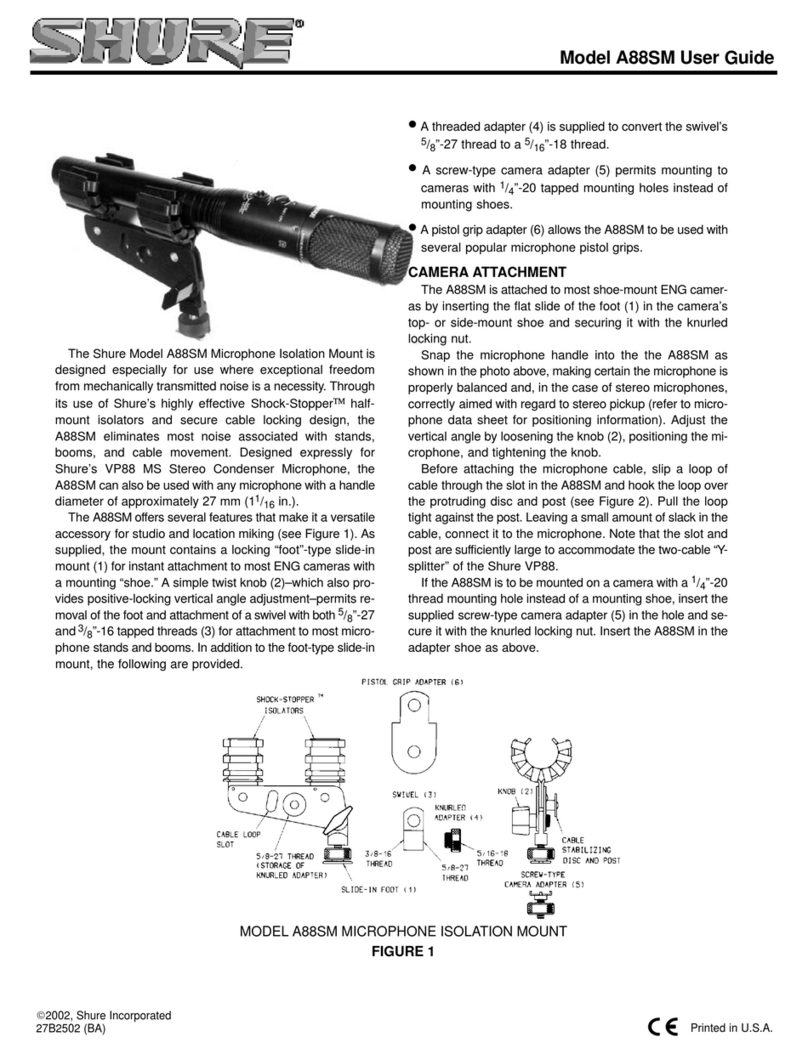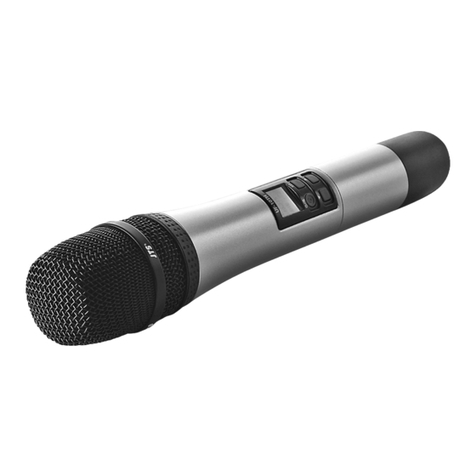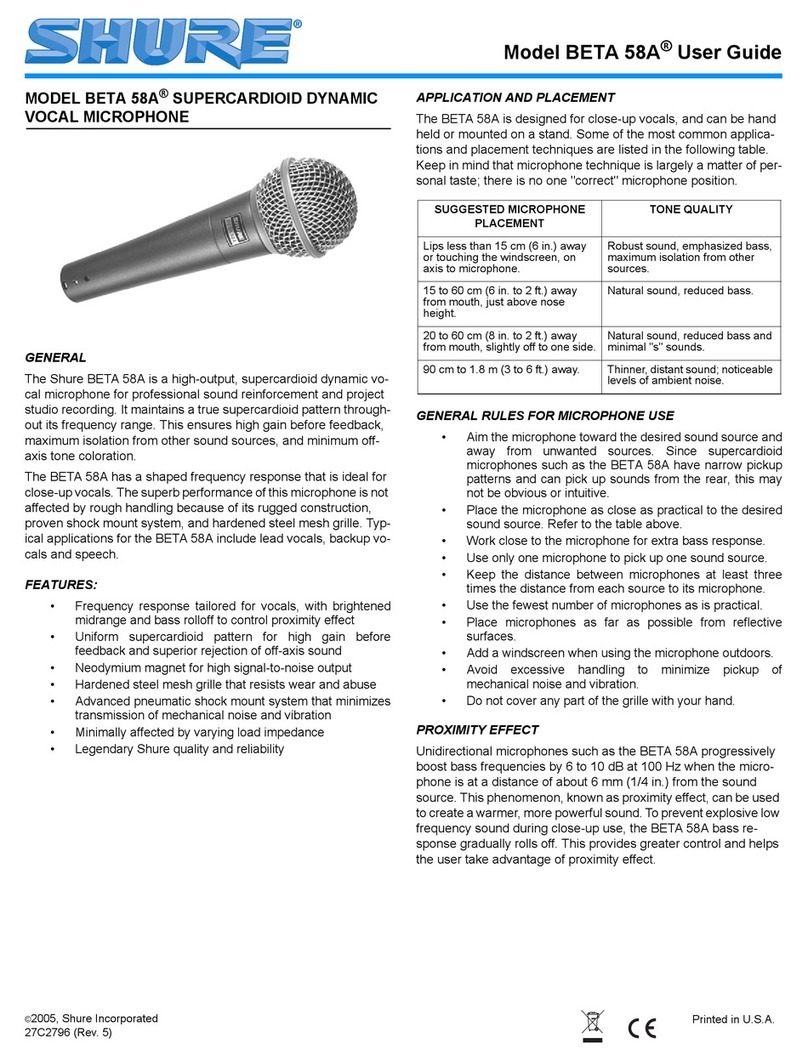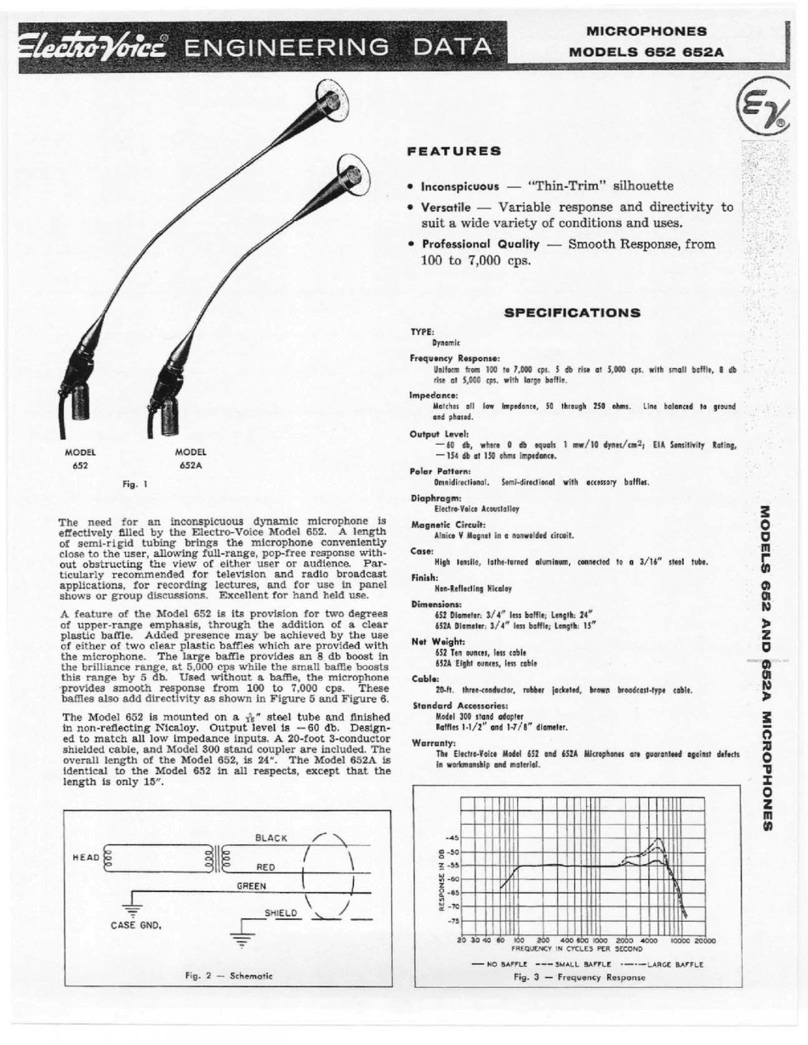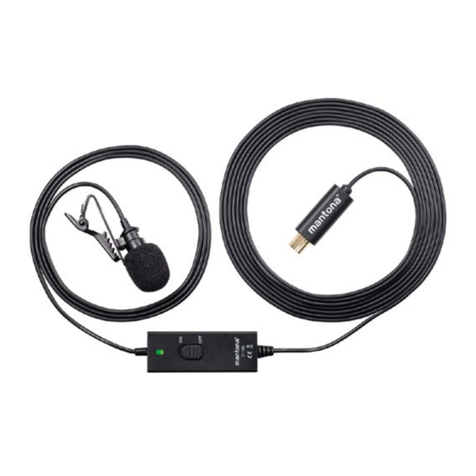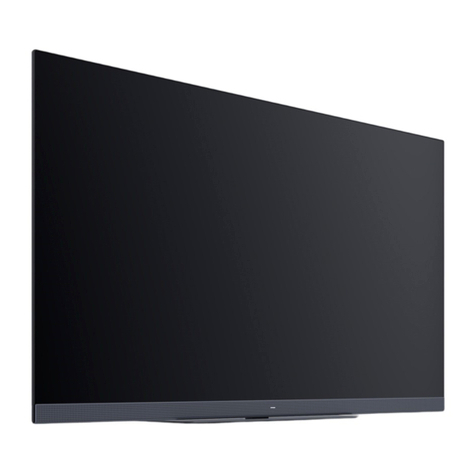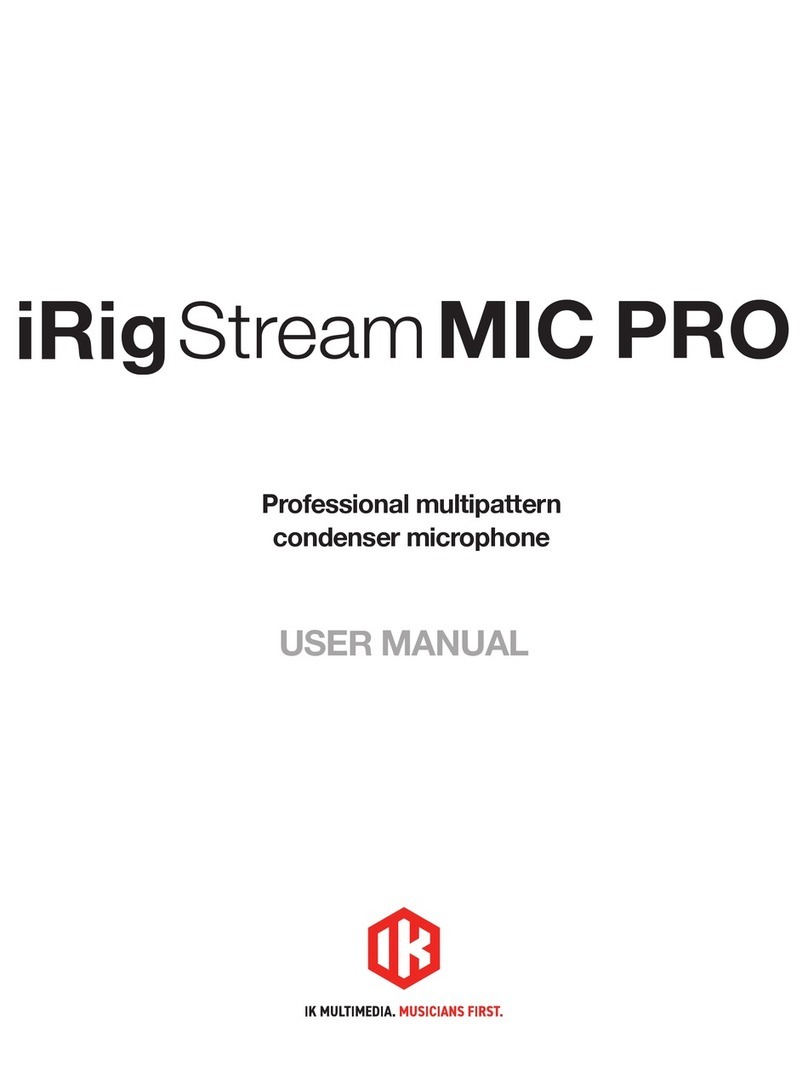
ELECTRONICS FOR SPECIALISTS ELECTRONICS FOR SPECIALISTS ELECTRONICS FOR SPECIALISTS ELECTRONICS FOR SPECIALISTS ELECTRONICS FOR SPECIALISTS ELECTRONICS
MONACOR INTERNATIONAL GmbH & Co. KG • Zum Falsch 36 • 28307 Bremen • Germany
Copyright©by MONACOR INTERNATIONAL. All rights reserved. A-1769.99.01.09.2017
ECMS
1
2
3➂
40
30
20
10
05020 100 200 500 1k 2k 5k 10k
30°
330°
300° 60°
90°
120°
270°
240°
210° 180° 150°
ECMS-60
Référence num. • Codice 23.6950
4 Dati tecnici
Tipo de micrófono:� � � �microfono a condensatore
a grande membrana con FET
Sistema: � � � � � � � � � � �cardioide
Gamma di frequenze: �20 – 20 000 Hz
Sensibilità: � � � � � � � � �17,8 mV/Pa a 1 kHz
Pressione sonora max�: 125 dB
Rapporto S/R: � � � � � � �> 70 dB
Impedenza nominale: �200 Ω
Alimentazione: � � � � � �48V
⎓
, phantom
Temperatura d’impiego:
�0 – 40 °C
Dimensioni:� � � � � � � � �⌀50 mm × 130 mm
Peso:� � � � � � � � � � � � � �290 g
Collegamento:� � � � � � �XLR, 3 poli, simm�
Con riserva di modifiche tecniche.
➁Directivité à 1kHz / Caratteristica direzionale con 1kHz
➀Réponse en fréquences / Risposta in frequenza
Microfono a condensatore
a grande membrana
Queste istruzioni sono rivolte a utenti con cono-
scenze base nella tecnica audio. Vi preghiamo
di leggerle attentamente prima della messa in
funzione e di conservarle per un uso futuro.
1 Possibilità d‘impiego
Questo microfono con la sua membrana di
25,4mm (1”), estremamente sottile, placata
d‘oro, è stato realizzato per impieghi professionali
negli studi di registrazione e dal vivo; è adatto sia
per prelevare il suono da strumenti musicali che
per applicazioni di canto e di lingua parlata.
Per il funzionamento, il microfono richiede un‘a-
limentazione phantom di 48V. Sono in dotazione un
supporto per il microfono e una custodia in pelle.
2 Avvertenze importanti per l’uso
Il microfono è conforme a tutte le direttive rile-
vanti dell’UE e pertanto porta la sigla .
•
Il microfono è previsto solo per l’uso all’interno
di locali. Proteggerlo dall’acqua gocciolante e
dagli spruzzi d’acqua nonché da alta umidità
dell’aria. La temperatura d’esercizio ammessa
è 0–40°C.
•
Per la pulizia usare solo un panno morbido,
asciutto; non impiegare in nessun caso prodotti
chimici o acqua.
•
Nel caso di uso improprio, di collegamento sba-
gliato o di riparazione non a regola d’arte non si
presta nessuna garanzia per il microfono e non
si assume nessuna responsabilità per eventuali
danni a persone o a cose.
Se si desidera eliminare il microfono de-
finitivamente, consegnarlo per lo smal-
timento ad un’istituzione locale per il
riciclaggio.
3 Messa in funzione
1) Avvitare il supporto del microfono su uno sta-
tivo con filettatura di 16mm (5⁄8”).
2) Svitare l’anello filettato (3) sul lato inferiore del
microfono e posizionare il microfono sul l’a-
nello di sostegno (1) del supporto. Posizionare il
microfono in modo che il lato con il simbolo
sia indirizzato verso la sorgente sonora (fig.3)
e stringere di nuovo l’anello filettato.
3) Per orientare il microfono verso la sorgente so-
nora allentare la vite (2) del supporto, posizio-
nare il microfono come desiderato e stringere
di nuovo la vite.
4) Collegare il microfono con un ingresso micro-
fono dell’apparecchio audio utilizzato (p.es. di
un mixer), servendosi di un cavo con connettori
XLR (p.es. un cavo della serie MEC). L’ingresso
deve essere equipaggiato con un alimenta-
zione phantom di 48V. Se l’apparecchio audio
non dispone di alimentazione phantom, oc-
corre collegare il microfono con l’apparecchio
audio per mezzo di un alimentatore phantom
esterno (p. es. EMA-3 o EMA-200).
Microphone à condensateur
avec grande membrane
Cette notice s’adresse aux utilisateurs avec des
connaissances techniques de base en audio.
Veuillez lire la présente notice avec attention
avant le fonctionnement et conservez-la pour
pouvoir vous y reporter ultérieurement.
1 Possibilités d‘utilisation
Ce microphone avec membrane 25,4mm (1”),
extrêmement fine et recouverte d‘or, est spéciale-
ment conçu pour des utilisations professionnelles
en studio et live et est également adapté pour des
prises de son d‘instruments et des applications de
discours et chant.
Pour le fonctionnement, le microphone re-
quiert une alimentation fantôme de 48V. Un sup-
port micro et un sacoche en cuir sont livrés.
2 Conseils importants d’utilisation
Le microphone répond à toutes les directives né-
cessaires de l’Union européenne et porte donc le
symbole .
•
Le microphone n’est conçu que pour une utili-
sation en intérieur. Protégez-le de tout type de
projections d’eau, des éclaboussures et d’une
humidité élevée de l’air. La plage de température
de fonctionnement autorisée est de 0– 40 °C.
•
Pour le nettoyer, utilisez un chiffon sec et doux,
en aucun cas de produits chimiques ou d’eau.
•
Nous déclinons toute responsabilité en cas de
dommages matériels ou corporels résultants si
le micro est utilisé dans un but autre que celui
pour lequel il a été conçu, s’il n’est pas correc-
tement branché ou s’il n’est pas réparé par un
technicien habilité ; en outre, la garantie de-
viendrait caduque.
Lorsque le micro est définitivement retiré
du service, vous devez le déposer dans une
usine de recyclage adaptée pour contri-
buer à son élimination non polluante.
CARTONS ET EMBALLAGE
PAPIER À TRIER
3 Fonctionnement
1) Vissez le support micro sur un pied équipé d’un
filetage 16mm (5⁄8”).
2) Dévissez l’anneau fileté (3) sur la partie infé-
rieure du micro et placez le micro sur l’anneau
(1) du support. Tournez le microphone de telle
sorte que le côté avec le symbole soit en
direction de la source sonore (schéma 3). Puis
revissez l’anneau fileté.
3) Pour orienter le microphone vers la source
audio, desserrez la vis (2) du support, posi-
tionnez le microphone à votre convenance et
revissez la vis.
4) Reliez le microphone via un cordon avec fiche
XLR mâle (p.ex. un cordon de la série MEC)
à une entrée micro de l’appareil audio utilisé
(p.ex. table de mixage). L’entrée micro doit
avoir une alimentation fantôme 48V. Si l’ap-
pareil audio ne délivre pas d’alimentation fan-
tôme, reliez le microphone via un appareil à ali-
mentation fantôme (p.ex. EMA-3 ou EMA-200)
à l’appareil audio.
4 Caractéristiques techniques
Type microphone : � � � microphone à condensateur
avec grande membrane et FET
Directivité : � � � � � � � � cardioïde
Bande passante :� � � � 20 – 20 000 Hz
Sensibilité : � � � � � � � � 17,8 mV/Pa à 1 kHz
Pression sonore max�: 125 dB
Rapport signal/bruit : > 70 dB
Impédance nominale : 200 Ω
Alimentation : � � � � � � fantôme 48V
⎓
Température fonc� : � � 0 – 40 °C
Dimensions : � � � � � � � ⌀50 mm × 130 mm
Poids :� � � � � � � � � � � � 290 g
Branchements : � � � � � XLR, 3 pôles, sym�
Tout droit de modification réservé.
FrançaisItaliano
